Content
- Views
- Symptoms and Signs
- Causes
- Diagnostics
- Treatment methods
- Drug therapy
- Physiotherapy
- Operation
- Rehabilitation
- Possible complications and prognosis
- Video about spastic tetraparesis
Spastic tetraparesis is a disease, in which the motor functions of the upper and lower extremities are impaired. Pathological processes are more often diagnosed in children. In most cases, the disease is provoked by neurological disorders and disorders. Without timely diagnosis and properly selected therapy, spastic tetraparesis entails serious complications.
Views
In medicine, spastic tetraparesis in children and adults is classified depending on provoking factors and taking into account the course of pathological processes:
| Name | Description |
| Sluggish | The disease is accompanied by slight weakness, which primarily occurs in the arms and legs. At the end of the day, the discomfort and discomfort increase. |
| Mixed | Muscle tone decreases or increases. It all depends on the individual characteristics of the person. |
| Reflex | Hypertonicity of muscle fibers disrupts reflexes, which leads to a decrease and deterioration in limb mobility. |
| Central | Tetraparesis in this situation occurs against the background of damage to both hemispheres of the brain. |
| Spastic | Tetraparesis, which is characterized by severe stiffness of the lower and upper limbs. Their functioning is disrupted. With the spastic form of the disease, the development of the brain worsens. |
Each type of spastic tetraparesis is accompanied by characteristic clinical symptoms that will help diagnose the disease in a timely manner and begin treatment.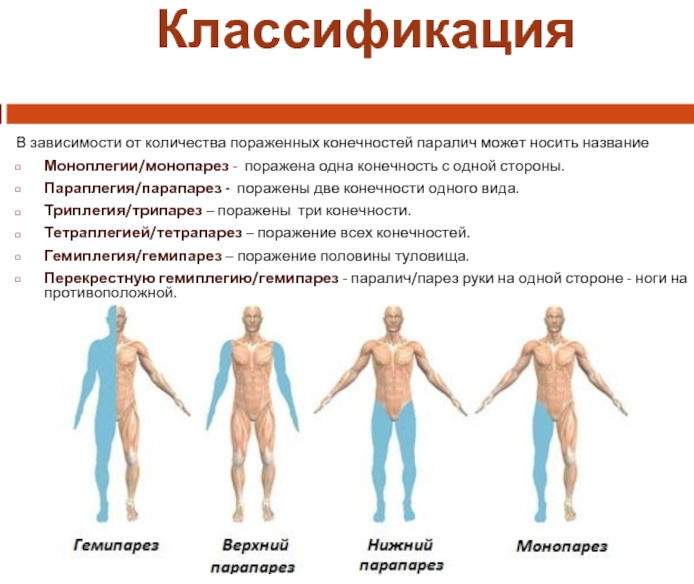
Classification based on the provoking factor:
| Name | Description |
| Congenital tetraparesis | The disease is diagnosed in children after a difficult pregnancy, if the mother is diagnosed with serious diseases and disorders in the body. |
| Acquired | Pathological processes provoke trauma and damage to the spine. The same goes for cerebral hemorrhages. |

 A physician or neurologist, as well as a medical examination, will help to establish an accurate diagnosis.
A physician or neurologist, as well as a medical examination, will help to establish an accurate diagnosis.
Symptoms and Signs
The clinical picture with spastic tetraparesis in children is characterized by pronounced symptoms. The present symptoms will help the specialized doctor determine the stage of the disease and the degree of damage to the small organism.
Spastic tetraparesis in children is accompanied by the following symptoms:
- violation of motor functions on the legs and arms;
- there is also a disorder of speech, hearing;
- vision problems appear;
- the patient's consciousness is disturbed;
- the child's attention and behavior deteriorates;
- muscle fibers involuntarily contract;
- there is a mental retardation;
- the bone structure of the skull is poorly developed;
- the functioning of the respiratory organs is disrupted;
- externally the lower and upper limbs change;
- there is a failure in the work of the small pelvis;
- painful sensations appear in the muscles;
- temporary loss of activity of the lower and upper limbs;
- pathological processes are accompanied by severe shortness of breath;
- the patient is worried about coughing;
- hiccups appear;
- gait is disturbed;
- general weakness arises;
- bones are deformed;
- sleep is disturbed, insomnia worries;
- limited mobility of the hands.

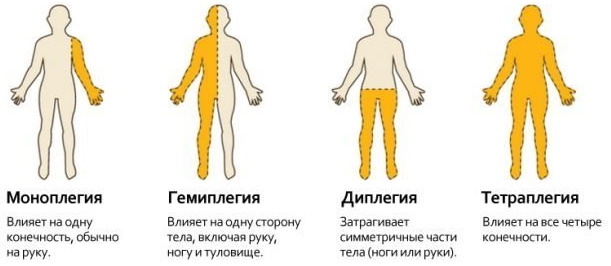
As the pathological processes progress, the patient develops problems with intelligence. For young children under one year old, a characteristic symptom of spastic tetraparesis is head incontinence. The disease often occurs with other comorbidities, which also belong to the group of congenital disorders.
Causes
Impaired motor functions in children and adults are diagnosed against the background of numerous provoking factors. In most cases, the triggering mechanism is a serious illness.
Spastic tetraparesis in children is provoked by the following pathological changes:
- acute violation of cerebral circulation;
- thrombosis of large arteries;
- myasthenia gravis;
- neurosurgical operations;
- polyneuritis;
- encephalitis;
- cerebral palsy (cerebral palsy);
- dropsy of the brain;
- polyneuropathy;
- inflammatory processes in the cervical vertebrae;
- malfunction of the central nervous system.
Increased intracranial pressure, which is present in a child or an adult for a long time, also provokes a violation of motor functions in the legs and arms.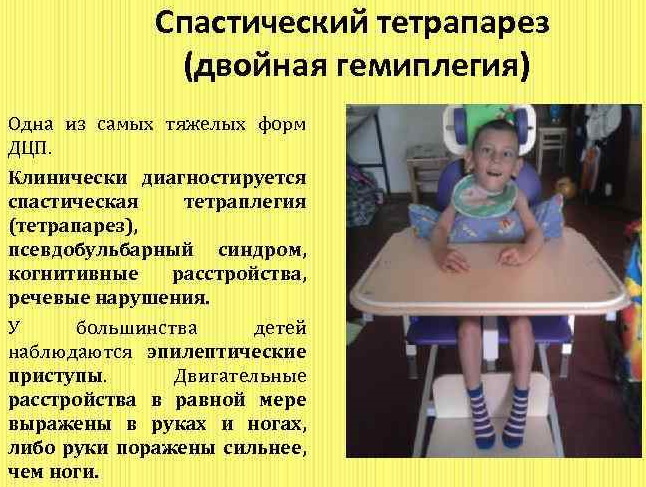
Separately, it is necessary to highlight the provoking factors that contribute to the development of the disease in children:
- premature birth of a baby;
- infectious lesion of the maternal body during pregnancy;
- rhesus factor blood group;
- multiple pregnancy;
- small body weight at the birth of a baby;
- intoxication of the body;
- complications during labor;
- convulsive seizures;
- the development of jaundice in a child;
- dysfunction of the thyroid gland in the expectant mother.
At risk are patients who have been diagnosed with malignant or benign processes in the body. The same applies to people after surgery on the brain or spine.
Diagnostics
Comprehensive diagnostics for spastic tetraparesis in children is carried out in order to determine the main cause of the development of pathological processes. It is necessary to differentiate the disease, since many neurological diseases are accompanied by similar clinical symptoms (multiple sclerosis, botulism, poliomyelitis, idiopathic transverse myelitis).
The diagnosis and treatment of tetraparesis in children is carried out by a neurologist. The specialist examines the patient and prescribes instrumental and laboratory examinations in order to determine the disease with maximum accuracy and choose the right therapy.
The following test methods help diagnose spastic tetraparesis in children and adults: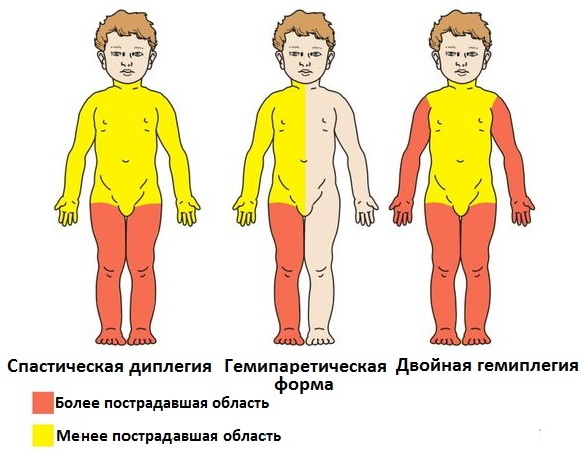
| Name | Description |
| General blood analysis | With the development of the inflammatory process inside the human body, blood counts change (the level of leukocytes, erythrocytes, ESR). |
| Computed tomogram (CT) | A highly informative research method that allows you to carefully study the work and condition of internal organs and systems. To identify pathological changes, the degree and stage of degenerative processes. |
| Magnetic resonance imaging (MRI) | The most informative survey method that allows you to consider all layers of the investigated area. Determine with high accuracy the area of localization of pathological processes. |
| X-ray | The study is carried out in order to view the bone structures and determine the damage. |
| Ultrasound examination (ultrasound) | The internal organs and systems of the human body are examined separately, degenerative changes and functional disorders are revealed. |
Examination for tetraparesis in children is carried out using various tests, since it is important to establish an accurate diagnosis. The effectiveness of a specially selected scheme depends on the results obtained. Improper therapy will lead to the fact that a person will have serious complications against the background of the progression of the disease.
Treatment methods
Spastic tetraparesis in children and adults requires complex therapy using various methods. Treatment is carried out in a stationary environment. Various methods are used to help eliminate disorders in the work of the musculoskeletal system and the accompanying symptoms of the disease.
Drug therapy
Medicines are selected by a neurologist, guided by the results obtained after examining the patient and the individual characteristics of his body. Drug therapy increases impulse conduction, improves metabolic processes in the brain. Medicines can also restore functional mobility of the lower and upper limbs.
Patients are prescribed the following medications:
| Drug group | Name | Application |
| Muscle relaxants | Baclofen, Botulinum toxin | Medicines reduce the spastic effect in the lower and upper extremities, improving their mobility. The tablets should be taken orally with meals. The recommended dosage for adults is 5 mg 3 times a day. It should be gradually increased every 3 days by 5 mg. The course of therapy depends on the patient's condition. Cancellation of the drug is carried out gradually, within 1-2 weeks.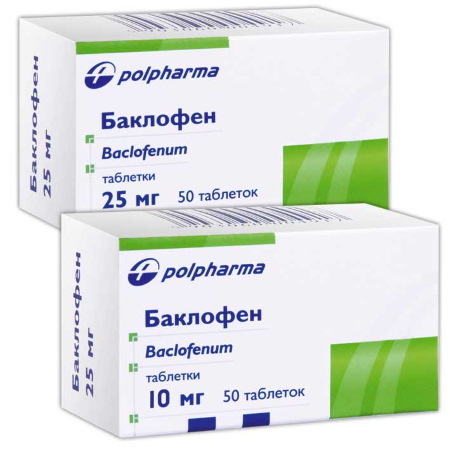
|
| Medicines for the therapy of the central nervous system | Cytoflavin, Riboflavin | Medicines activate metabolic processes to improve the nutrition of damaged cells, enhance tissue regeneration, and restore the functioning of the brain. The drug should be taken orally 2 tablets 2 times a day with a time interval of 8-10 hours. It is important to drink the medicine before meals in 30 minutes. Swallow the tablets whole and drink plenty of water. The therapy lasts 25 days. After a month, the treatment can be repeated if necessary. |
| Antioxidants | Mexidol, Neurox | The drugs improve blood circulation in the brain area and eliminate seizures. Forced feeding of damaged tissues slows down the process of their destruction. The medicine is taken orally. The dosage for adult patients is 125-250 mg 1-2 times a day. The duration of therapy is 2-6 weeks. |
In some situations, Botulinum Toxin is the only remedy that helps restore movement in the lower and upper extremities. It is often prescribed for cerebral palsy (cerebral palsy), after a stroke or head injury, spine. Additionally, vitamin and mineral complexes are selected for patients in order to restore the functioning and condition of bone and muscle tissue.
Physiotherapy
Spastic tetraparesis in children requires complex treatment, which involves not only taking medications. Physiotherapy will help improve the function and mobility of the lower limbs. The complex of sessions is selected by a physiotherapist. The specialist takes into account the established diagnosis, the present complaints in a person and the individual characteristics of his body.
Patients with spastic tetraparesis are advised to attend the following physiotherapy procedures:
| Name | Description |
| Massage | A point effect helps to relax tense muscles as much as possible and reduce hypertonicity. During the session, which is conducted by a qualified specialist, strokes, shakes and a slight warm-up of the affected area of the body are performed. The intensity of the massage is gradually increased. |
| Kinesotherapy | Treatment is carried out using active and passive movements, which are necessary to properly develop the affected muscles and increase their elasticity. |
| Hirudotherapy | An alternative medicine that uses leeches. |
| Acupuncture | Reflex therapy involves the introduction of thin needles into special biological points on the patient's body. Irritation from acupuncture enters the central nervous system, thereby stimulating and increasing the effect of the brain on the damaged area of the body. |
| Reflexology | Treatment is carried out to relax the affected muscles of the lower and upper extremities, increase the range of motion and prevent the development of contractures. Also activate the motor area of the cerebral cortex and cerebellum. The therapy helps to restore disturbed reflexes of the entire human body. |
The tone of the limbs is so pronounced that the movement of the legs and arms is limited. Therefore, with spastic tetraparesis in children and adults, it is recommended to carry out complex treatment. After physiotherapy procedures, it is possible to establish the range of motion and even restore the patient's independent walking.
Operation
Surgical treatment for patients with spastic tetraparesis is indicated in emergency situations. The same goes for the complications that have appeared. Therefore, it is important to diagnose the disease in a timely manner and begin treatment. Surgery helps to restore motor functions in a specific damaged area of the lower or upper extremities.
Children's spastic tetraparesis is treated with an orthopedic method. The procedure allows you to eliminate contractures and stretch muscle fibers. Surgery also includes plastic surgery to repair muscles and tendons. In most cases, after surgery, patients will have a favorable prognosis.
Rehabilitation
After surgery, the patient will have a long rehabilitation period. At this time, the person is also prescribed treatment to speed up the healing process and fully restore the functioning of the lower and upper limbs.
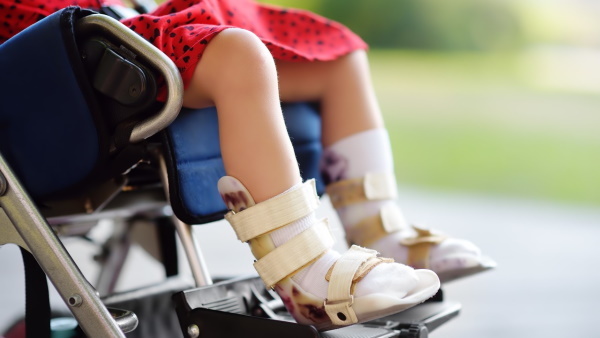
For rehabilitation after surgery, patients are prescribed the following methods of therapy:
| Name | Description |
| Occupational therapy | An active method of treatment that allows you to restore and activate all the functional capabilities of the sick organism. Taking into account medical indications, special labor processes are selected for patients. |
| Speech therapy exercises | The patient is dealt with by a speech therapist. During the lessons, the correct pronunciation of words is developed, due to which the swallowing function is restored. The program also aims to improve hearing and coordination. |
| Hydrotherapy | The pool water treatment helps to maximize freedom of movement. When performing certain exercises, muscles are stretched, contractures are reduced, motor balance, balance reaction and walking are restored. |
| Hippotherapy | A therapeutic technique that involves riding a patient on a horse. Manipulation stimulates motor reflexes and increases activity. |
Spastic paralysis is also treated by applying cold or heat locally to the affected area of the body. After each procedure, hypertrophied tendon reflexes decrease, the range of motion increases, and muscle function improves. It is recommended to apply cold to the affected area of the body for 20 minutes. The course of treatment includes 15-20 therapeutic sessions.
Possible complications and prognosis
Spastic tetraparesis in children and adults develops against the background of various pathological processes. The patient needs emergency medical help to stop the progression of the disease and prevent serious complications.
Without therapy, the patient will face serious consequences:
| Name | Description |
| Spinal deformity | Complication of spastic tetraparesis, which is more common in older people. Against the background of pathological processes, the general well-being of a person worsens. The same goes for physical capabilities. |
| Mental retardation | Complication of tetraparesis in children, which occurs against the background of improperly selected therapy. The pathological condition is characterized by impaired mental development in the intellectual, cognitive and social spheres. There is a malfunction in the functioning of the brain. |
If spastic tetraparesis develops after a stroke or head injury, treatment should be started immediately in order to have time to restore the affected brain tissue. The victim has 1.5-2 months to stop the progression of pathological changes. Otherwise, rehabilitation will take more time and effort.
For children with congenital spastic tetraparesis, comorbidities that cannot be cured are complications. The right therapy will improve the quality of life if symptoms of mental retardation are not present.
Spastic tetraparesis cannot be ignored, especially in children, since the disease is serious and can lead to dangerous complications, including disability. Pathology requires a thorough examination to determine the cause of the development of motor dysfunctions. Complex treatment is carried out using traditional drugs, physiotherapy procedures and, if there are no medical contraindications, folk remedies.
Video about spastic tetraparesis
About spastic tetraparesis in children with cerebral palsy:



